
Occupational therapy (OT) focuses on helping people become as independent as possible in all areas of their lives. Some people may think that occupational therapy is only for adults. But a child’s occupation is playing and learning. Occupational therapists can evaluate a child’s skills needed for playing, school performance, and self-care activities (feeding, dressing, bathing, grooming, etc.) and compare them with what is developmentally appropriate for the child’s age.
Occupational therapy (OT) supports children to develop the skills needed for increased independence and confidence in their daily activities.
Develop independence with tasks like dressing, eating, and personal hygiene
Develop skills for grasping, manipulation and hand-eye coordination
Modulate overreaction or under reaction to sensory stimuli
Enhance interactions and play with peers
Provide strategies for focus, attention, organization, planning, and emotional control
OT can support children facing these challenges by helping them develop the skills needed for more independence and confidence in their daily activities.
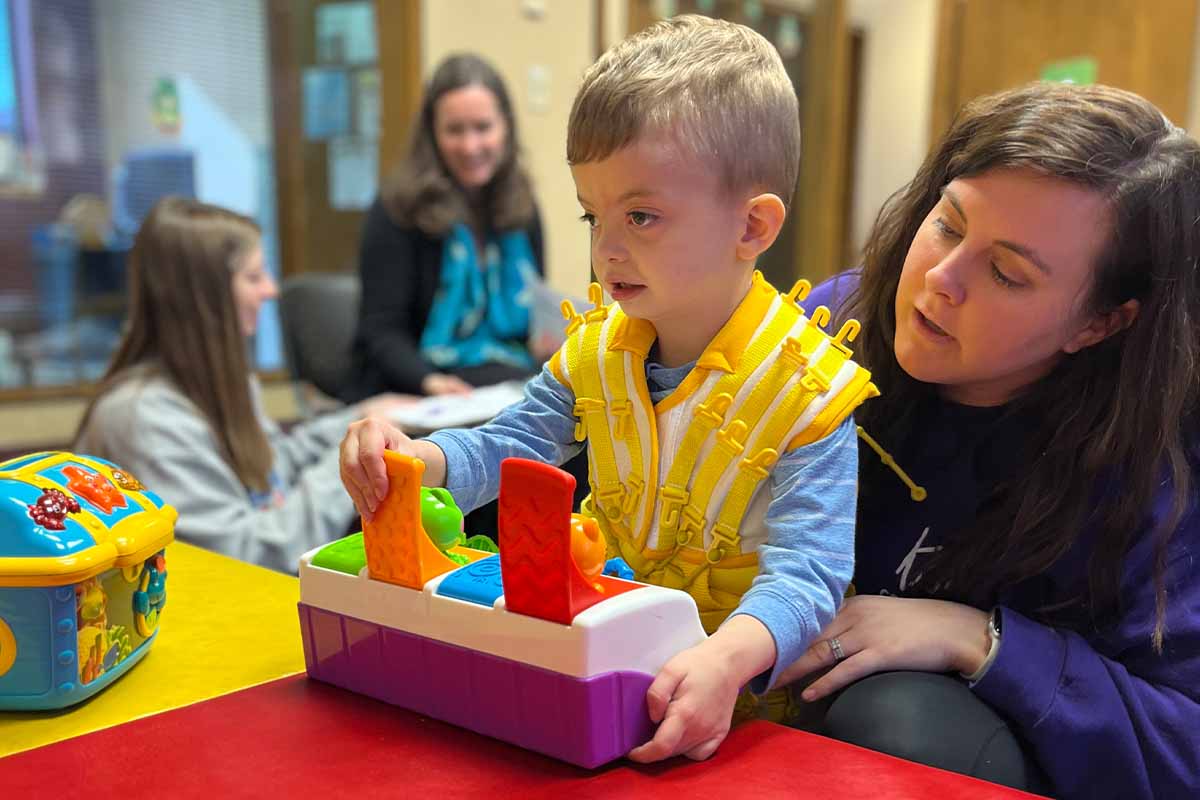
Each of our therapists has an individual treatment room, as well as shared treatment areas.
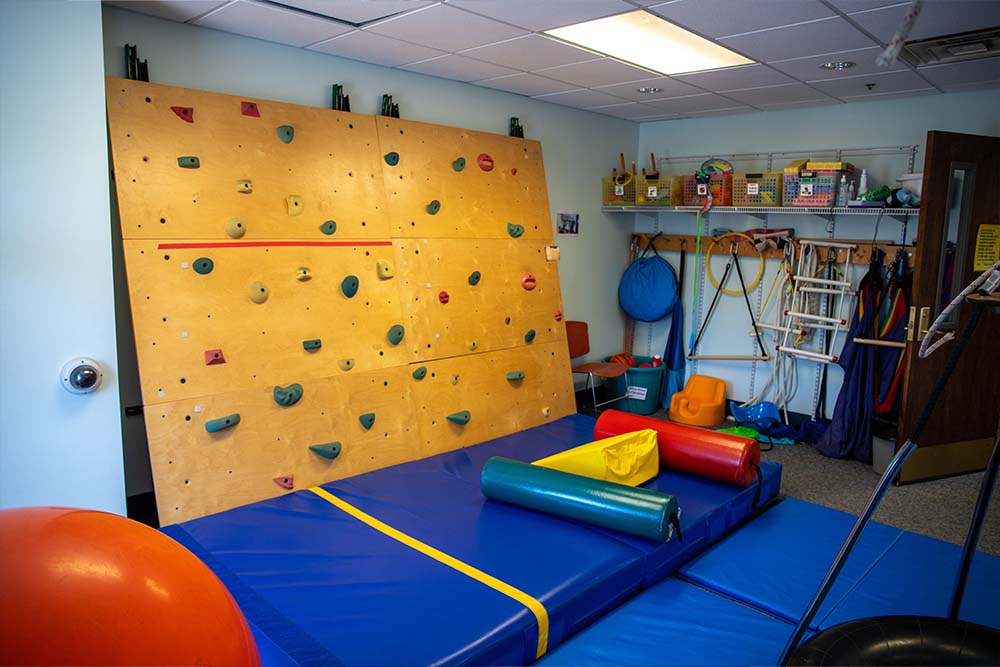
Frequently used with children who have sensory processing disorder. Sensory input can help children with self-regulation difficulties, such as being under-aroused or over-aroused and unable to modulate these levels to participate in their daily routines. It is also used for general strengthening activities.
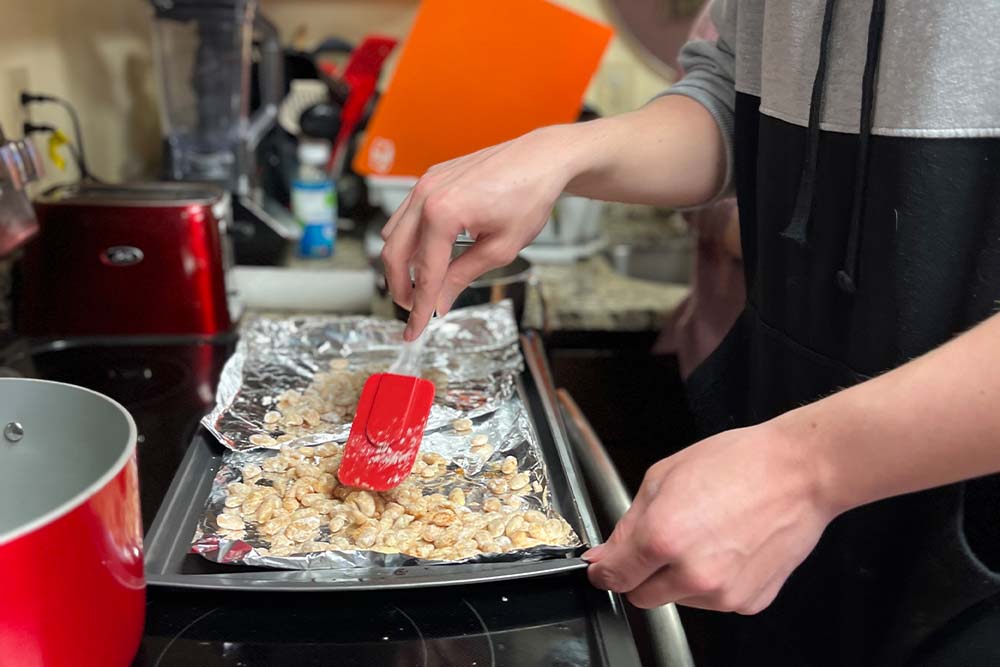
This area allows therapists to work with patients to practice self-care tasks, such as standing at the sink to brush their teeth and functional transfers. The kitchen allows the practice of light cooking and other household chores such as loading/unloading the dishwasher, sweeping the floor, and doing laundry.
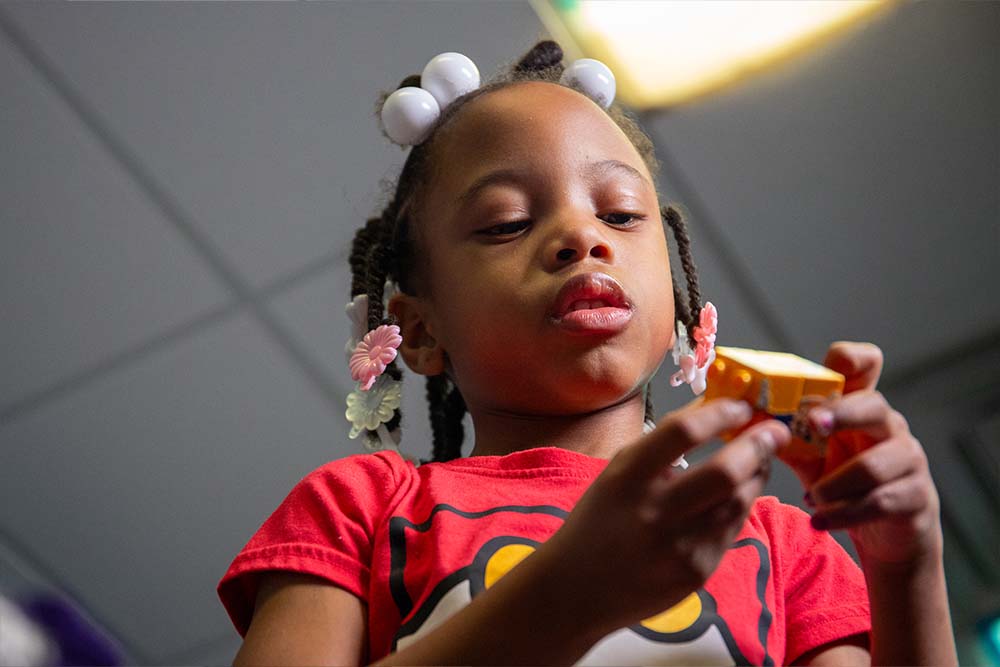
OTs may place a cast on a child’s arm for Constraint Induced Movement Therapy (CIMT). That is, covering the non-involved arm and hand with a cast so the child is forced to use the more involved arm that they may be neglecting. A child also may undergo serial casting to increase range in a wrist or elbow that is losing range due to spasticity. Most of our OTs are certified in Deep Physical Agent Modalities (e.g. electrical stimulation and ultra-sound). We can use these in conjunction with functional tasks.

Interactive Metronome
This is a computer-based training program that improves timing in the brain in an organized and engaging format. The child is asked to adjust their performance to the reference tone and guide sounds, and then functional brain networks begin to communicate in a more efficient and rhythmic pattern. It can improve attention and concentration, processing speed, motor planning, and sequencing, as well as balance and coordination.
iLs (Integrated Listening System)
A multi-sensory program for improving brain function, iLs trains the brain to process and manage multi-sensory input. It has been useful for children with a sensory processing disorder, learning challenges, developmental delays, and rehab after brain injury or stroke. Occupational therapy (OT) focuses on helping people become as independent as possible in all areas of their lives. Some people may think that occupational therapy is only for adults, but a child’s “occupation” is playing and learning.
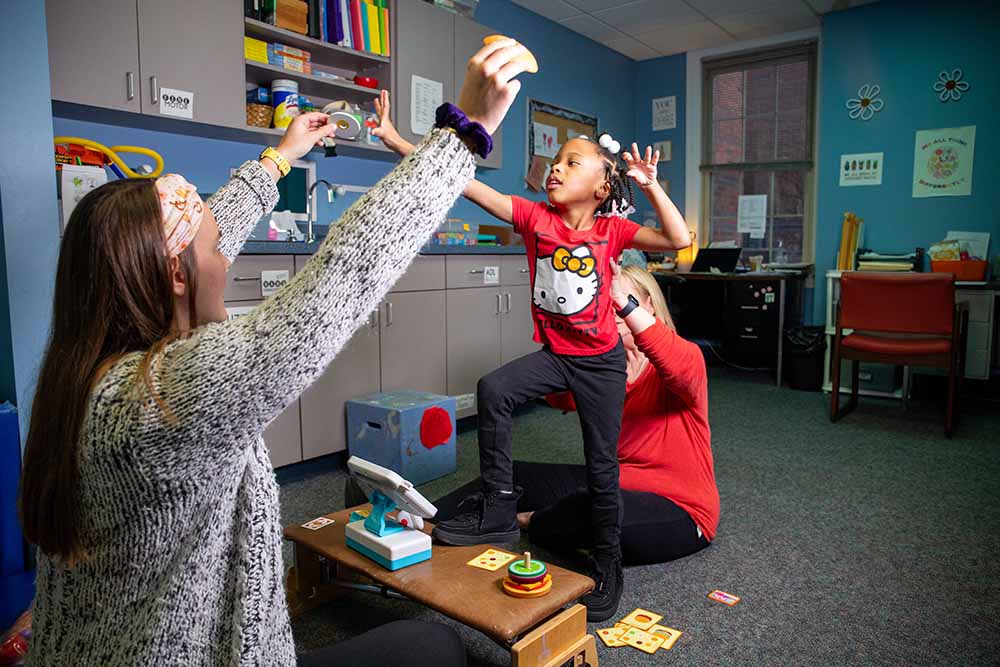
Our OTs pursue continuing education in specialty areas including neurodevelopment treatment interventions, sensory integration, neurodiversity and feeding in addition to providing care to improve important daily living skills.
OTs at Kids Center also participate as members of the specialty teams that staff our Intensive Program, Spasticity Clinic and Feeding Clinic.
Some of our OTs are trained in use of Universal exercise units (UEU) also known as the spider cage along with Therasuits, an FDA approved soft dynamic proprioceptive orthosis in a variety of sizes. A few of our OTs (along with several of our PTs) were trained on the Therasuit Method. In addition, we offer Dynamic Movement Intervention (DMI), which is a therapeutic approach focusing on postural reactions achieving improved motor skills.

To learn more about our occupational therapy program, please contact us at (502) 635-6397.